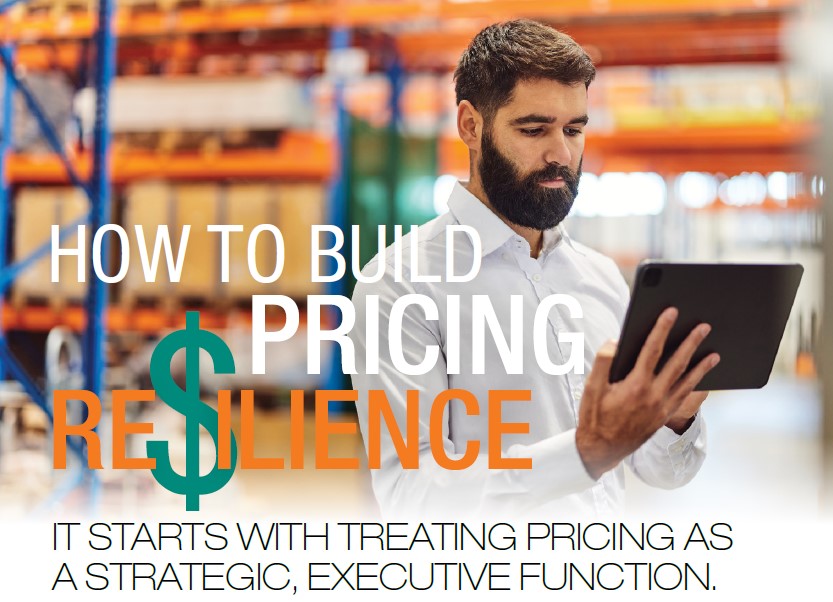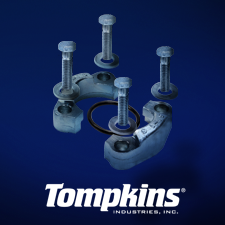 |
| istockphoto.com |
By Scott Sinning
Distributors face increasingly complex pricing challenges, from shifting customer expectations and margin pressure to AI disruption and trade volatility.
The good news is that our industry has a long tradition of resilience. The people who work in distribution are known for their grit, adaptability and sharp operational thinking. Those same qualities are now needed to modernize pricing – to make it faster, more consistent and strategically aligned with customer value.
Pricing touches every dollar of revenue and every customer interaction. Yet too often, it’s still viewed as a back-office function, driven more by habit and manual processes than by strategy and data analytics. In practice, pricing resilience means having the agility to deliver prices that are accurate, market-competitive, and aligned with customer expectations, consistently, and at scale.
Pricing resilience starts by recognizing pricing as a strategic function, not just a transactional one. Ideally, it’s a blend of customer-facing speed and accuracy, and back-office efficiency and automation.
RETHINKING STRATEGY: PRICING THAT WORKS FOR CUSTOMERS AND EMPLOYEES
A resilient pricing strategy doesn’t start with numbers. It starts with the customer.
Think about your own experience: When a customer reaches out for a quote, visits your website, or talks to a rep, do they get a consistent price? Do they get it quickly? Does it match the value they expect to receive? If your pricing is inconsistent, slow, or requires multiple layers of approval, it undermines confidence and sends customers searching elsewhere.
Many distributors would be surprised by how much friction still exists in their pricing processes. These delays, exceptions, and inconsistencies across channels frustrate customers and wear down internal teams. As a result, margins shrink.
Pricing should be responsive and repeatable across every customer touchpoint. That consistency signals reliability and fairness, building trust and repeat business. In customer interviews, it’s common to hear frustrations like “We never know what price we’re going to get,” or “It depends on who I talk to.” These are red flags that pricing is hurting the customer experience.
How your sales employees feel about pricing matters just as much. They work with it every day, and it should be a positive experience that supports success – not something they dread. Do they have a clearly defined process and a system they can trust? Is management engaged and supportive? When pricing guidance is unclear, employees fill in the gaps with ad hoc decisions and workarounds.
Over time, this wears down morale and increases turnover, especially among talented sales reps who feel stuck between customer demands and antiquated processes.
Resilient pricing empowers your team. It provides structure and support so they can act with confidence. When reps know how to defend a price – and have the tools to quote quickly and consistently – they’re more likely to win and stay engaged.
HOW TO MAKE PRICING A GROWTH LEVER
Pricing is one of the few levers that can improve profits without adding headcount or driving more volume. But to become a growth driver, it must be treated as a strategic capability, with executive-level visibility and ownership.
This starts with assigning pricing accountability at the executive level. Pricing touches sales, finance, operations, and customer service, with key intersections in IT and HR. It requires someone with the authority to set direction, invest resources, and align teams. Beneath that leadership, a pricing manager or analyst should own the day-to-day work of analytics, tools, and deal support.
At a certain revenue size, it makes sense to have a full-time experienced pricing leader or a fractional executive to offer strategic guidance. The right structure depends on your size, complexity and growth goals.
When CEOs prioritize pricing, the entire organization follows. Pricing is not just a tactic. It’s a growth engine. This is about alignment, culture, and customer experience. When pricing is clear, consistent, and strategic, customers feel it, and so do your people.
THE ROLE OF AI AND TECHNOLOGY
Artificial intelligence has rapidly moved from theory to practice in pricing. There are many reputable pricing analytics software providers serving distributors of all sizes and budgets. These tools can show data-driven target prices, optimize special price agreements, and manage volume incentive rebates. AI-enabled systems crunch data faster, apply proven commercial logic, and find margin opportunities that humans often miss.
The ROI for pricing technology can be high, but software alone isn’t enough. Success depends on the strategy and people behind it. AI-enabled pricing requires skilled team members who understand your business, reasonably clean data (it doesn’t need to be perfect), and integration with your existing order systems. Most importantly, it requires executive commitment, because this work involves change management and must be led from the top.
To enable your sales team, consider investing in pricing tools and governance that support the sales process instead of slowing it down. Combine this with a clear understanding of your value proposition and training in buyer negotiation tactics, and you’ll be ready to adapt in any market.
Distributors who commit to this approach gain not just better margins but faster quote turnaround, more disciplined discounting and stronger confidence at the point of sale.
WHY RESILIENCE MATTERS
Tariffs are a prime example of the importance of building pricing resilience.
Cost uncertainty and volatility are affecting supply chains and often with little notice. It’s putting a spotlight on pricing and cost functions, underscoring the importance of having the right staffing and tools in place.
Resilient pricing includes having a plan to manage disruptions like these. That might include diversifying sourcing, building flexibility into pricing agreements, and ensuring your cost-change process is airtight.
One of the most critical elements is how pricing changes are communicated. This depends on your sales model, but don’t leave it to chance. Prepare your sales team to have informed, consistent conversations across the business. Sudden price increases without context can erode trust. Transparent, data-backed explanations are far more likely to be accepted and appreciated by your customers.
For executives and sales leaders, now is the time to assess your pricing. Pricing resilience means being able to adapt, compete and win without sacrificing margin or customer trust.
 |
Scott Sinning is the founder of Pricing for Distributors and consults with wholesale distributors to turn pricing challenges into profit opportunities. A former vice president of pricing strategy with Graybar, he offers independent assessments, strategic planning, and executive coaching. Learn more and access free pricing guides at www.pricingfordistributors.com.
This article originally appeared in the July/August 2025 issue of Industrial Supply magazine. Copyright 2025, Direct Business Media.












